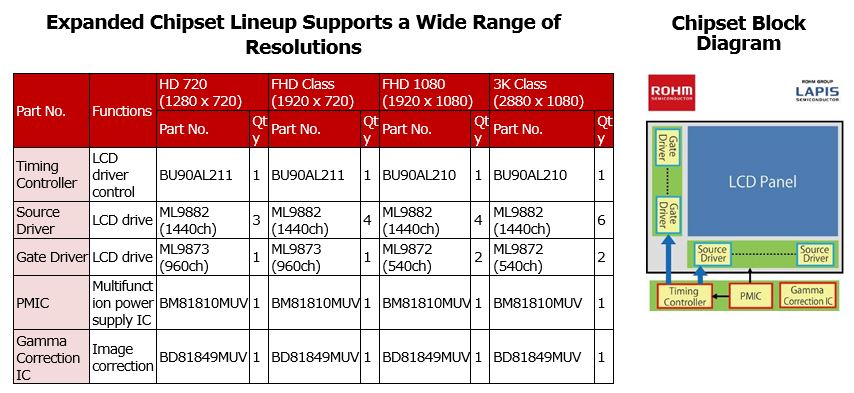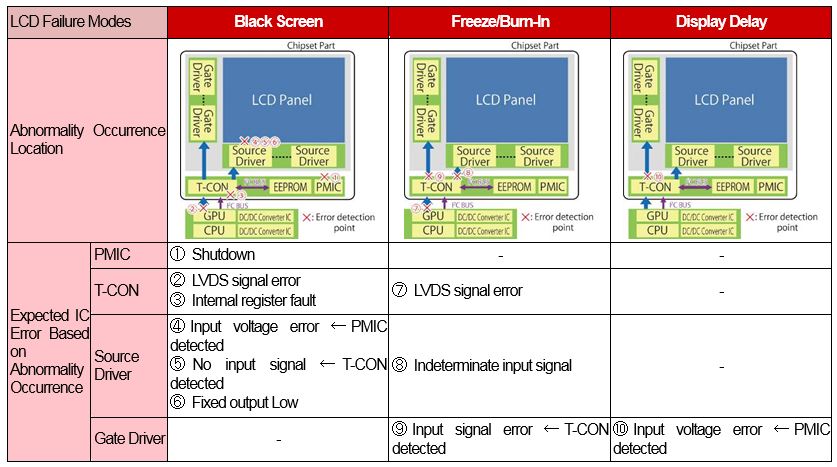Drive safely with automotive chipsets
Chipsets designed to drive and control automotive LCDs have been announced by ROHM and LAPIS Semiconductor. These include larger high resolution monitors used for navigation and the instrument cluster.
In recent years the adoption of LCDs in vehicles for the instrument cluster, navigation, electronic mirrors, and other systems has risen significantly, while the growing number of applications has increased the demand for larger, higher resolution displays. To achieve these needs, it is necessary to increase the number of driver and controller channels. However, this makes system configuration and operation verification more difficult, strengthening the demand for chipset solutions. In addition, in applications such as electronic mirrors where malfunctions can lead to serious accidents, functional safety is required.
ROHM’s new chipsets integrate a gamma correction IC, timing controller (T-CON), source driver, and gate driver for driving HD/FHD class displays, along with a Power Management IC (PMIC) to ensure optimum drive operation. Each IC is designed to share information as needed, achieving automotive-grade reliability and marking the first time functional safety was successfully introduced in devices for displays. Compatibility with LCDs for side mirrors and speedometers that can lead to accidents is also provided.
In addition, chipset optimisation allowed ROHM to cover a wide range of specifications while at the same time integrate a Fail detection function in the timing controller to verify operation, making it possible to configure high resolution LCD panels.
Key features:
1. Automotive chipsets that provide functional safety in LCDs
Each IC configured in the chipset integrates a function for mutually selecting the expected failure mode. As a result, it is possible to complementarily detect panel failure and confirm and provide feedback on information such as input signals to the LCD as well as peeling/destruction of the LCD driver. Introducing functional safety contributes to the prevention of serious accidents caused by the malfunction of monitors for the speedometer, side mirrors and other systems.
For example, the driver may not notice that the screen for the side mirrors has frozen in the case no object is detected at the time, presenting a danger that can lead to serious injury if someone suddenly were to go behind the car while the car is moving. To prevent this ROHM delivers functional safety that can detect if the screen is frozen.
Examples of LCD failure detection by chipset functional safety
The power management IC includes a double register for detecting abnormalities and auto-refresh function to enable recovery during abnormal operation, ensuring high reliability against unexpected influences such as noise.
2. Easily configure HD/FHD class high resolution LCDs
ROHM chipsets are designed to cover a wide range of specifications, making it possible to easily configure high resolution HD/FHD class LCDs.
In addition, the timing controller is equipped with a fail detection circuit for verifying chipset operation. And the setting of each output in the power management IC can be changed by simply rewriting the internal register value. This reduces development resources while contributing to common board designs.
3. Comprehensive design support provided, including application boards
ROHM is currently preparing manuals, reference designs, and application boards that facilitate chipset evaluation.








